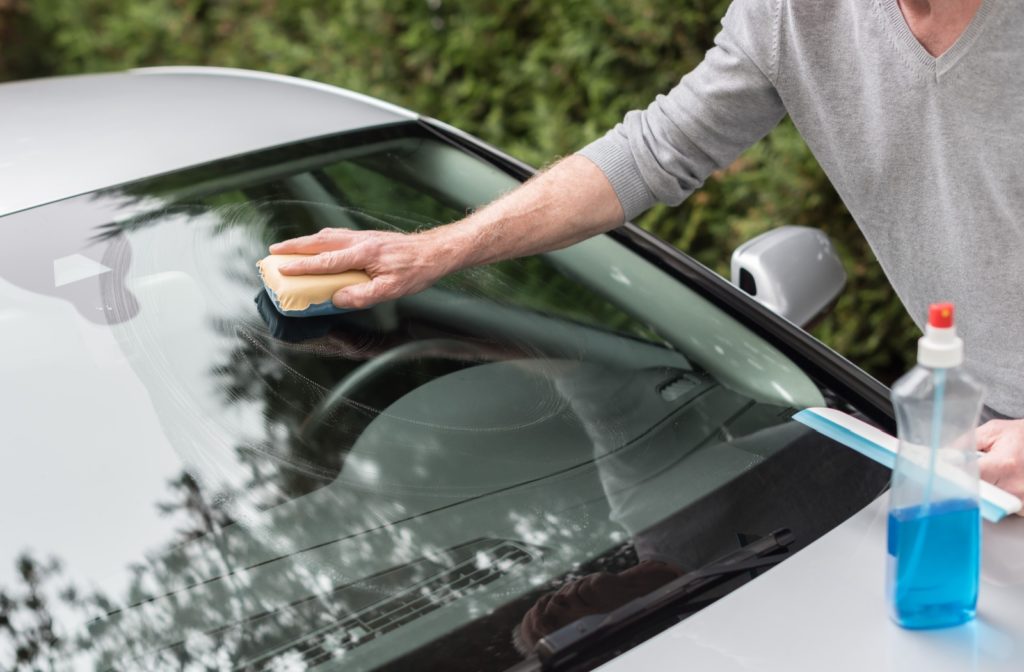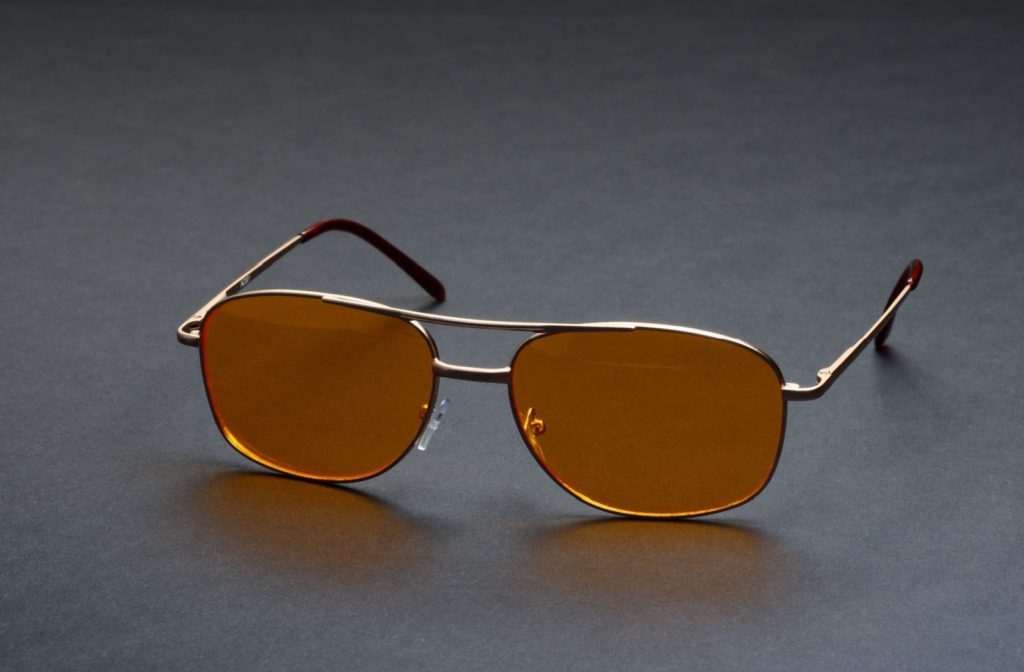Driving at night can be a daunting task for many, with reduced visibility and increased glare from headlights. In recent years, yellow-tinted lenses have gained popularity as a potential solution to enhance night driving. But are they truly effective?
The answer is slightly more complicated than a simple yes or no. While yellow lenses can reduce glare to some extent, it’s important to note that they don’t function as night-vision glasses. They may offer benefits during the day or in certain conditions, but for night driving, it’s wise to manage expectations realistically.
If you or someone you love is struggling to see clearly at night, it’s best to get in touch with our eye doctors at Foothills Optometric Group where we can perform an eye exam and find the cause and solution to your specific eye concerns.
Understanding Yellow Lenses
The consensus on yellow lenses is that they do not significantly enhance driving performance in low-light conditions. This is particularly true regarding the detection of critical elements such as pedestrians, where yellow lenses may not offer the anticipated level of assistance.
A study featured in JAMA Ophthalmology reveals that these yellow lenses do not significantly improve road visibility, nor do they effectively diminish glare and halos. On the contrary, their use might even exacerbate visibility issues.
Using yellow lenses during nighttime equates to wearing sunglasses in low-light conditions, which is generally not advisable. While individuals might perceive an increase in brightness when wearing these lenses, there is no actual improvement in visual acuity. This misconception could potentially increase the hazards associated with night driving.
It is recommended to reserve yellow lenses for daylight hours, similar to conventional sunglasses. For those experiencing significant glare while driving at night, a consultation with an eye doctor is encouraged to rule out underlying conditions such as cataracts or age-related macular degeneration (AMD), which could be the primary contributors to the issue.
The Efficacy of Tinted Glasses for Glare
The discussion around the efficacy of tinted glasses for glare reduction continues. While some individuals report benefits from using yellow lenses to enhance contrast, it’s important to recognize that results may vary from person to person.
For those experiencing significant challenges with night driving glare, consulting an optometrist is encouraged. They can offer tailored advice and solutions.
Strategies for Reducing Glare
Addressing the issue of glare while driving at night can significantly improve your driving experience. Some effective strategies can include:
Maintaining Car Cleanliness
Maintaining the cleanliness of your vehicle’s windshield, windows, and mirrors plays a crucial role in minimizing glare. It may seem like a basic task, but its impact on reducing glare is substantial. Additionally, making sure that your headlights are clean and properly aligned not only enhances your visibility but also prevents blinding other drivers.
Adjusting the Dashboard
A lesser-known technique involves dimming your dashboard lights. This adjustment aids in better adapting your eyes to darker environments, allowing for improved road visibility without the distraction of interior lighting.
High Beams
Using high beams appropriately can also enhance your visibility during night driving, particularly on unlit roads. However, it’s essential to switch to low beams when approaching or being approached by another vehicle to avoid causing glare for other drivers.
Implementing these adjustments can markedly decrease the stress associated with night driving. Ensuring your safety and that of others on the road is paramount.

Increasing Contrast
Yellow lenses are like filters on a camera that make certain details stand out. They work by selectively reducing short-wavelength light. In other words, they block blue light and enhance contrast. This makes objects stand out more against backgrounds, especially in situations where the lighting isn’t great.
However, it is still advisable to skip the yellow glasses for night driving, as there isn’t any evidence that these lenses reduce headlight glare or improve your ability to spot pedestrians after dusk
Minimizing Eye Strain
It is imperative to approach the capabilities of yellow lenses with a degree of skepticism. While they are effective in filtering blue light, they may not universally address all dimensions of eye strain.
The effectiveness of these lenses varies among individuals, indicating that they should be considered part of a comprehensive strategy for managing eye health rather than a standalone solution.
The application of yellow lenses for night driving introduces additional considerations. Although some individuals report benefits in terms of reduced glare from headlights and streetlights, the consensus on their effectiveness in improving night vision and reducing eye strain under these conditions remains divided.
Navigating Night Driving with Yellow Lenses
The use of yellow lenses for night driving has its supporters and critics. While some swear by the improved visibility, reduced glare, and enhanced contrast, others remain skeptical of the claimed benefits.
Personal preferences and experiences may vary, making it crucial for individuals to try these lenses for themselves to determine whether they genuinely enhance their night-driving experience.
As with any driving aid, it’s essential to prioritize safety and adhere to recommended driving practices. This includes regular eye exams with your eye doctor at Foothills Optometric Group and proper vehicle maintenance, to ensure a safe and enjoyable driving experience at any time of day. Book your next eye exam today to make sure you’re driving safely!



